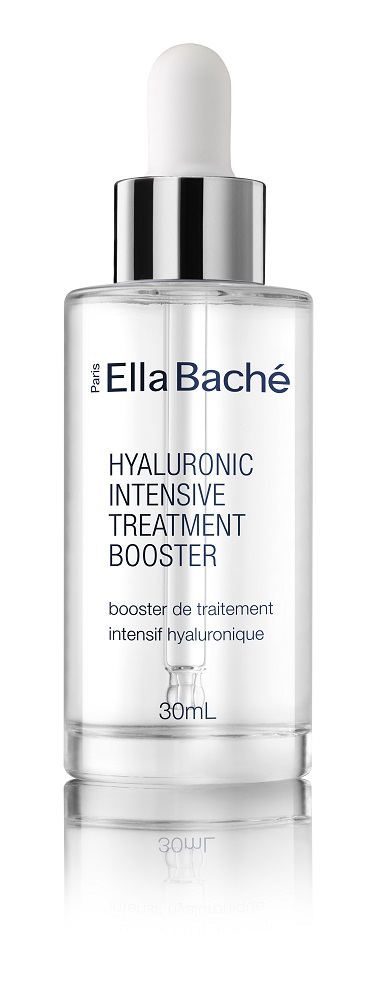Skincare therapists and modern beauty consumers alike are well-versed on the benefits of hyaluronic acid (HA). But when we get into the nitty gritty of it, the science behind the much-revered skincare ingredient is less understood.
Later this month, Ella Bache will launch their latest hydrating solution – Hyaluronic Intensive Treatment Booster. The product touts 5 different molecular weights of Hyaluronic Acid.

In hopes of better understanding how molecular weights actually work, and whether the number of them changes the effectiveness and overall result of a product, I enlisted the advice of cosmetic chemist, Michelle Wong of Lab Muffin Beauty Science:
Hannah Gay: From a scientific perspective, what is hyaluronic acid and what does it do to/for the skin?
Michelle Wong: “Hyaluronic acid is a long chain molecule that can bind to water. It acts as a humectant moisturiser that can hold onto water and keep skin hydrated.”
HG: I’m hearing a lot of talk from brands surrounding the varying molecular weights of hyaluronic acid present in skincare products. What impact does weight have on the capabilities of a skincare solution?
MW: “Smaller molecules of hyaluronic acid can sink deeper into skin and hydrate at deeper levels, while larger molecules sit closer at the surface.”
HG: How many daltons can the skin usually absorb in a standard hyaluronic acid skincare product, and how deeply can this go?
MW: “There are trillions and trillions of molecules in any skincare product, so it’s possible that one molecule could go really far. Skincare products also usually contain a distribution of HA molecular weights; I don’t think there really is a ‘standard’ but it’s unlikely that a substantial amount of HA would absorb deeply enough to have a noticeable effect on living layers.”
HG: What then does it mean if a brand is promoting a product that contains multiple molecular weights of hyaluronic acid?
MW: “‘Daltons’ is a unit of weight like grams, so it’s like if you had a jar of rocks that had a mix of 1, 2, 3, 4 and 5 gram rocks, you’d have a mix of sizes. If you poured that onto a big piece of foam with lots of holes in it, the little 1 gram rocks might pass through some of the holes in the foam and get deeper, while the 5 gram rocks are probably too big to go into any holes and would sit on the surface.
But if you only had 5 gram rocks (only one weight) they might all sit on top, or if you had only 1 gram rocks (also only one weight) they might all sink into the foam.
So if you have multiple molecular weights of hyaluronic acid, then some would sink deeper and some might sit on the surface, so you end up with more well-rounded hydration than if you only had very large or only had very small hyaluronic acid molecules.”
HG: What considerations should a consumer have when electing what type of hyaluronic acid product to use for maximum, safe skin penetration?
MW: “I’d recommend a product with different sizes of hyaluronic acid, and I’d recommend not relying on it as the only moisturiser. I think a lot of people assume hyaluronic acid will fix all their skin hydration problems, but it only really acts as a humectant – many people also need emollient and occlusive ingredients to effectively moisturise their skin.”
Read the current issue of our digital magazine here:
- For more news and updates, subscribe to our weekly newsletter
- Follow us on Instagram
- Like us on Facebook
- Join Australia’s largest network of beauty industry professionals on LinkedIn
- Subscribe to our print magazine
Have an idea for a story or want to see a topic covered on our site and in our pages? Get in touch at info@professionalbeauty.com.au.

